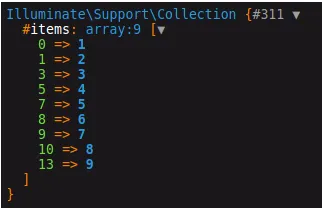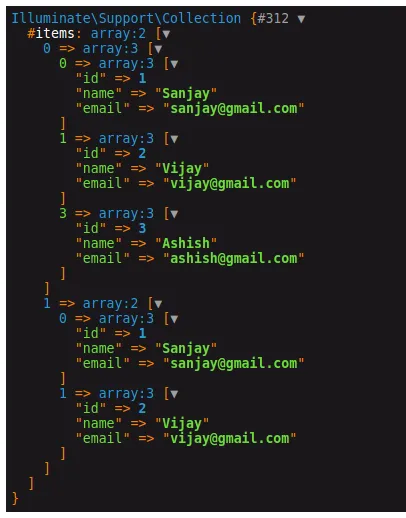This tutorial will show you how to get unique values in Laravel 10 collections. As a Laravel developer, you frequently meet situations in which you must extract different elements from a collection while avoiding duplicates.
In this quality guideline you will see the concept of Step-by-Step How To Get Unique values in Laravel Collection.
The <strong>Illuminate\Support\Collection</strong> class provides a fluent, convenient wrapper for working with arrays of data. For example, check out the following code. We’ll use the <strong>collect</strong> helper to create a new collection instance from the array.
As mentioned above, the collect helper returns a new <strong>Illuminate\Support\Collection</strong> instance for the given array.
Read More: Step-by-Step To Get First and Last Item in Laravel 10 Collection
So, creating a collection is as simple as:
$collection = collect([1, 2, 3]);Let’s get started.
Laravel Installation
Open terminal and run this command to create a laravel project.
composer create-project laravel/laravel myblogIt will create a project folder with name myblog inside your local system.
To start the development server of laravel –
php artisan serveURL: http://127.0.0.1:8000
Assuming laravel already installed inside your system.
Example #1: Get Unique (Single Dimensional Collection Array)
In this example we will consider a single dimensional array. We will see how to get only unique values from it.
Read More: Step-by-Step Guide To Merge Eloquents in Laravel 10 Collection
Suppose we have SiteController.php a controller file inside /app/Http/Controllers folder.
<?php
namespace App\Http\Controllers;
use Illuminate\Http\Request;
class SiteController extends Controller
{
public function index()
{
$data = [1,2,2,3,1,4,3,5,6,7,8,7,8,9,9,5];
$data = collect($data)->unique();
dd($data);
}
}
Output
When we execute this code snippet, then we will get something like this –

Example #2: Get Unique (Multi Dimensional Collection Array)
In this example we will consider a multi dimensional array. We will see how to get only unique values from it.
Same controller file we are considering for this demo as well.
<?php
namespace App\Http\Controllers;
use Illuminate\Http\Request;
class SiteController extends Controller
{
public function index()
{
$data = collect([
[
["id" => 1, "name" => "Sanjay", "email" => "sanjay@gmail.com"],
["id" => 2, "name" => "Vijay", "email" => "vijay@gmail.com"],
["id" => 1, "name" => "Sanjay", "email" => "sanjay@gmail.com"],
["id" => 3, "name" => "Ashish", "email" => "ashish@gmail.com"],
["id" => 3, "name" => "Ashish", "email" => "ashish@gmail.com"]
],
[
["id" => 1, "name" => "Sanjay", "email" => "sanjay@gmail.com"],
["id" => 2, "name" => "Vijay", "email" => "vijay@gmail.com"],
["id" => 2, "name" => "Vijay", "email" => "vijay@gmail.com"]
]
]);
$data = $data->map(function ($array) {
return collect($array)->unique('id')->all();
});
dd($data);
}
}
Read More: How To Get Last Record of Database Table in Laravel 10
Output
When we execute this code snippet, then we will get something like this –

We hope this article helped you to learn How To Get Unique values in Laravel 10 Collection Tutorial in a very detailed way.
If you liked this article, then please subscribe to our YouTube Channel for PHP & it’s framework, WordPress, Node Js video tutorials. You can also find us on Twitter and Facebook.
